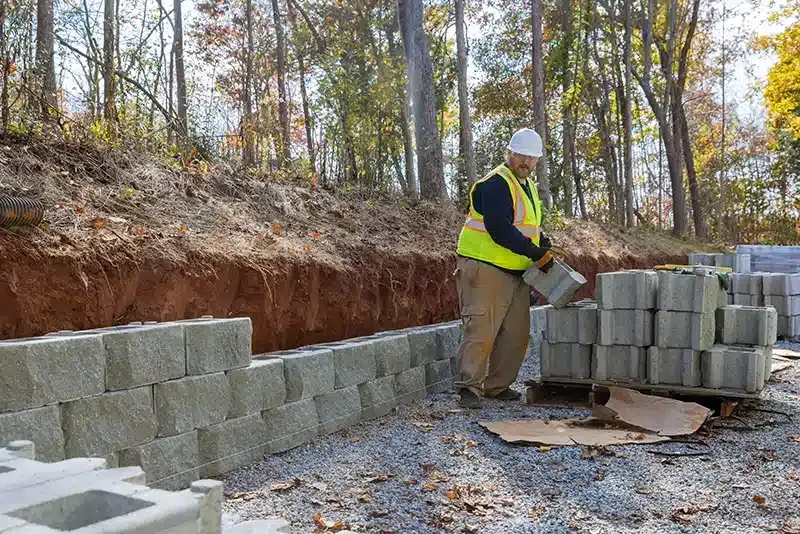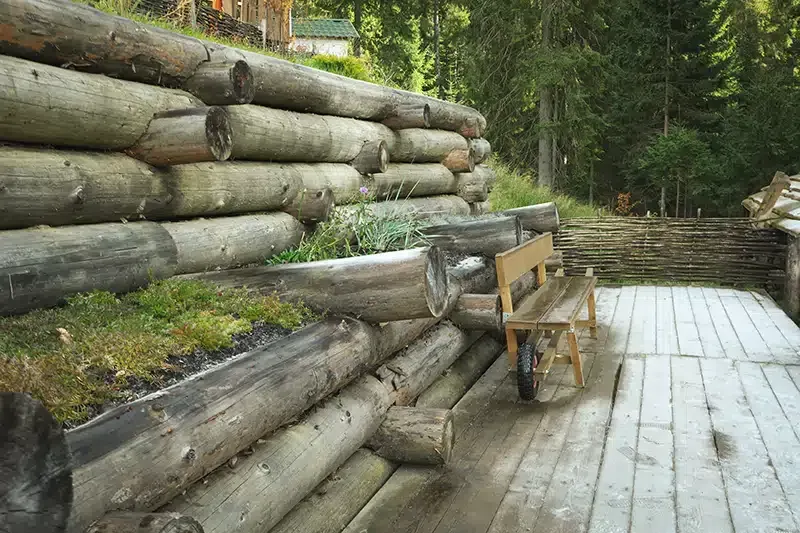How Long Do Retaining Walls Last With Regular Maintenance?
How Long Do Retaining Walls Last With Regular Maintenance?

When considering how long retaining walls last with regular maintenance, it's essential to understand that various materials have different lifespans. Concrete walls can endure for decades, while timber walls might need more attention to extend their lifespan.
Regular care and upkeep can significantly affect their durability. But what specific maintenance practices should you prioritize to ensure your retaining wall stands the test of time?
Let's explore that further.
Lifespan of Different Types of Retaining Walls
Choosing the right retaining wall means understanding how long each type lasts and what maintenance it requires.
Concrete Retaining Walls
Concrete walls offer long-lasting strength and reliability for most commercial properties.
- Typically last over 50 years.
- Resistant to weather, pests, and rot.
- Low maintenance once installed.
Timber Retaining Walls
Wood retaining walls provide a natural look but generally have a shorter lifespan.
- The average lifespan is 15 to 20 years.
- Susceptible to rot and insect damage.
- Requires regular sealing and inspection.
Stone and Brick Retaining Walls
Stone retaining walls and brick walls combine durability with classic aesthetics. When well-built, they can last 100 years or more.
- It can last 100 years or more when well-built.
- Resistant to weathering and decay.
- May need occasional repointing or cleaning.
Gabion Retaining Walls
Gabion walls use wire cages filled with rock and are ideal for certain landscapes.
- Lifespan ranges from 25 to 50 years.
- Durability depends on wire quality and the environment.
- Effective for drainage and erosion control.
Understanding these lifespans helps you select the best wall for your property’s long-term stability and appearance.
Factors Influencing Retaining Wall Durability
A retaining wall’s lifespan depends on more than its material—several key factors impact its overall performance and longevity.
Soil and Drainage Conditions
The surrounding soil and how water flows through the site are critical to a wall’s durability.
- Saturated or loose soil increases lateral pressure.
- Poor drainage leads to erosion and structural stress.
- Proper grading and drainage systems are essential.
Wall Design and Engineering
A professionally engineered design enhances strength and lifespan.
- Walls must be sized and reinforced correctly.
- Load-bearing calculations prevent future failure.
- Built-in features like weep holes improve drainage.
Environmental and Climate Impacts
Weather conditions directly affect material wear over time.
- Freeze-thaw cycles can crack concrete or stone.
- Constant moisture promotes wood rot and rust.
- UV exposure may degrade some finishes.
Quality of Installation
The craftsmanship behind the wall matters just as much as the materials used.
- Proper footing and backfill techniques are crucial.
- Experienced builders prevent construction errors.
- Attention to detail improves long-term performance.
Understanding these factors ensures a smarter investment in your retaining wall’s durability.
Essential Maintenance Practices for Longevity
Regular maintenance is key to extending the life and performance of your retaining wall.
Routine Inspections and Early Repairs
Frequent visual checks help catch problems before they escalate.
- Look for cracks, leaning, or bulging.
- Address minor issues promptly to avoid costly repairs.
- Consult a professional if a significant movement is detected.
Clearing Debris and Vegetation
A clean wall performs better and lasts longer.
- Remove soil, leaves, or plant roots pressing against the wall.
- Trim back overgrown vegetation that can trap moisture.
- Prevent buildup that adds unnecessary pressure.
Maintaining Proper Drainage
Effective water control is essential for structural integrity.
- Keep weep holes and drains clear of blockages.
Direct downspouts away from the wall. - Check for standing water after heavy rain.
Protective Treatments
Preserve your wall with the proper protective measures.
- Apply sealants to prevent moisture infiltration.
- Treat timber walls with preservatives.
- Reapply coatings as needed, based on the material.
Proper maintenance ensures your retaining wall remains stable, safe, and attractive. Neglecting care can lead to early failure and expensive repairs.
By staying proactive, you maximize your investment and avoid major issues. A well-maintained wall can last for decades with minimal intervention.


